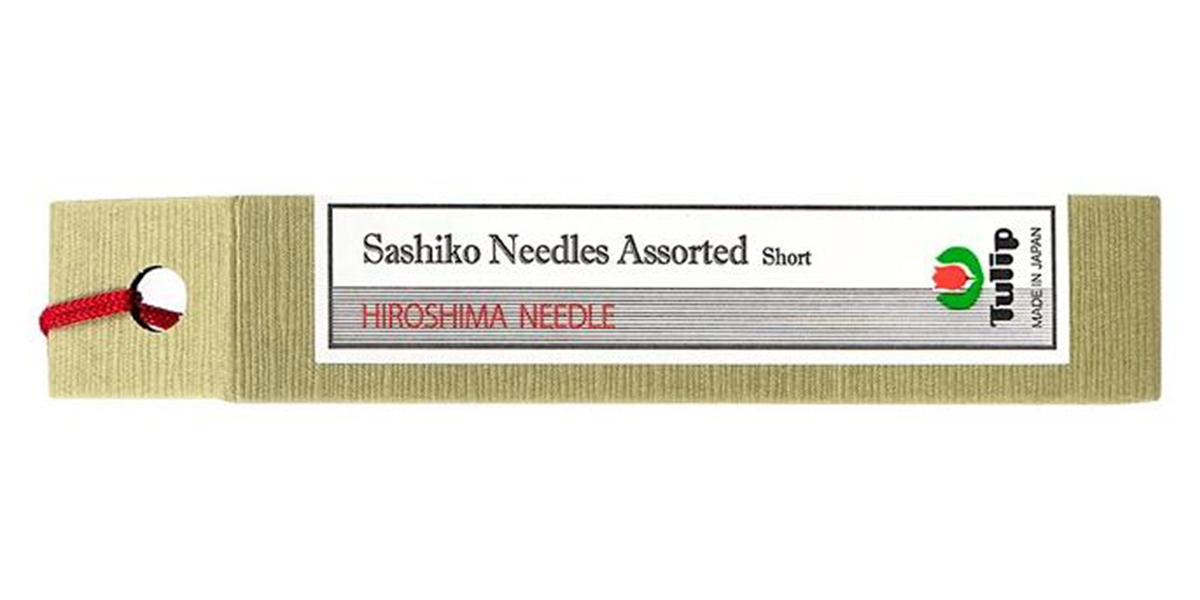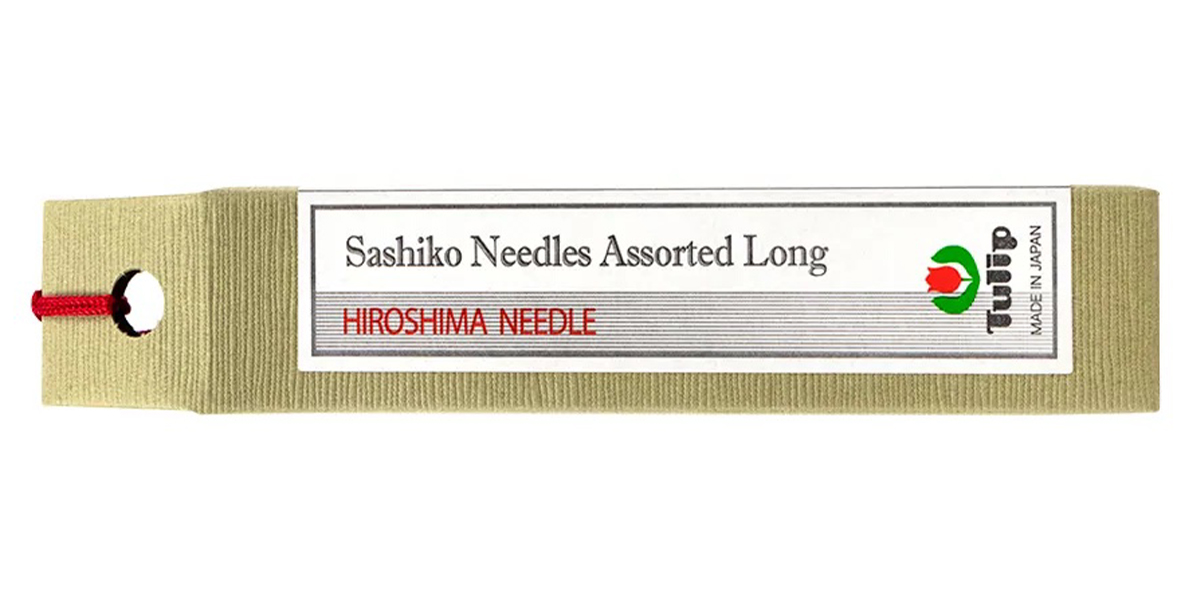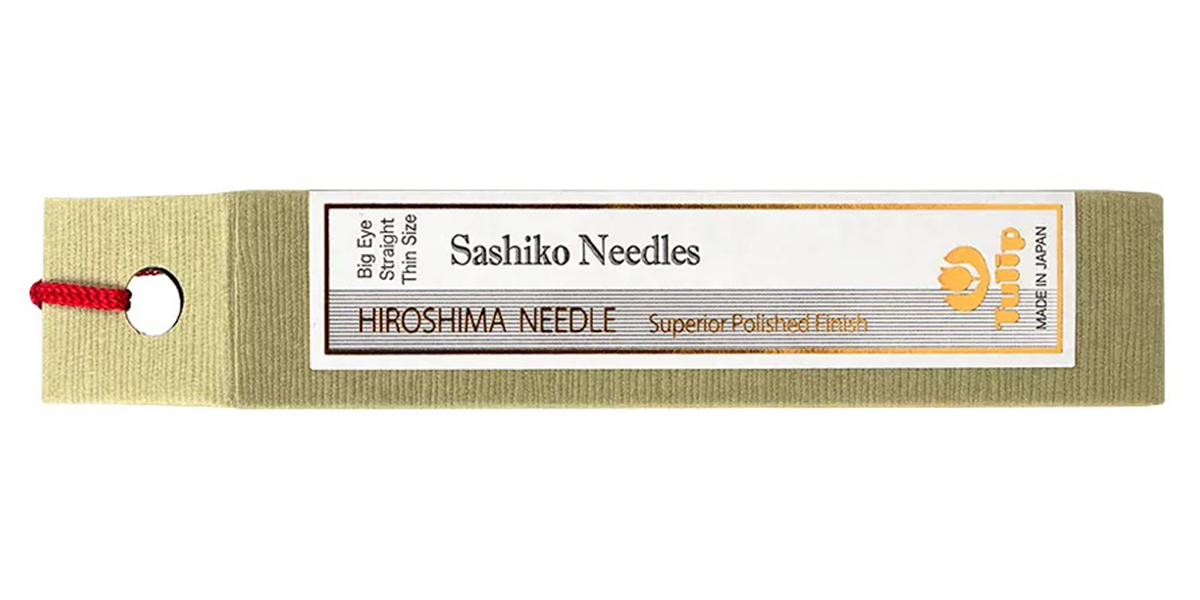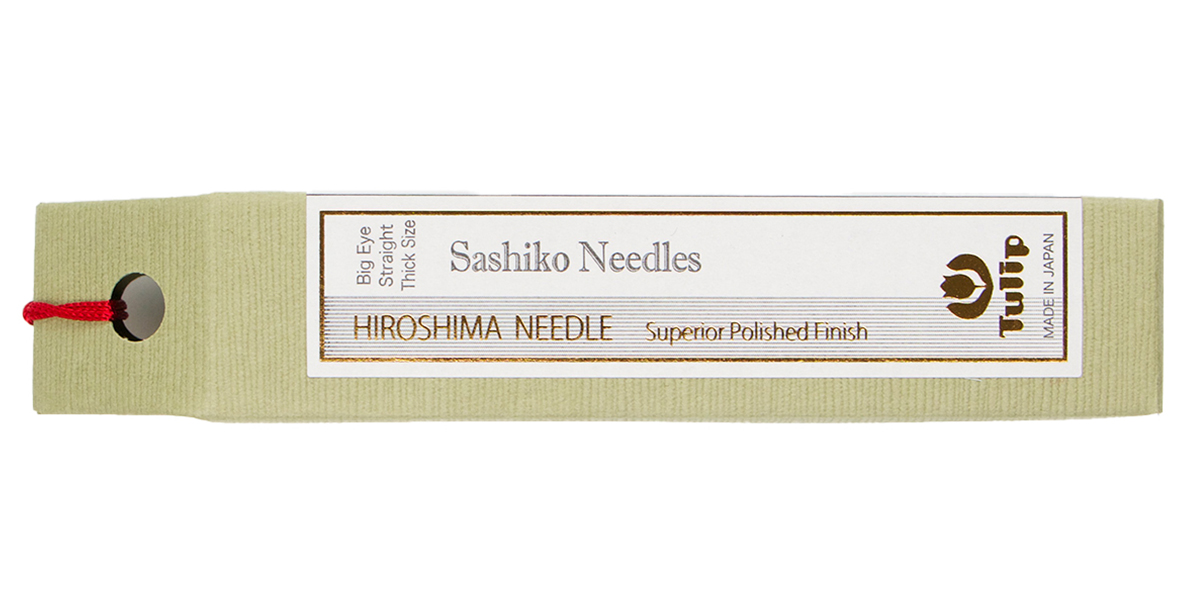Sashiko, meaning "little stabs," is a traditional Japanese mending technique using a running stitch, a practice that combines mending and quilting to create intricate pattens. Even with its ancient origins, sashiko is still popular and has expanded beyond its original use and color palette, becoming a much-loved embroidery technique around the world.
History
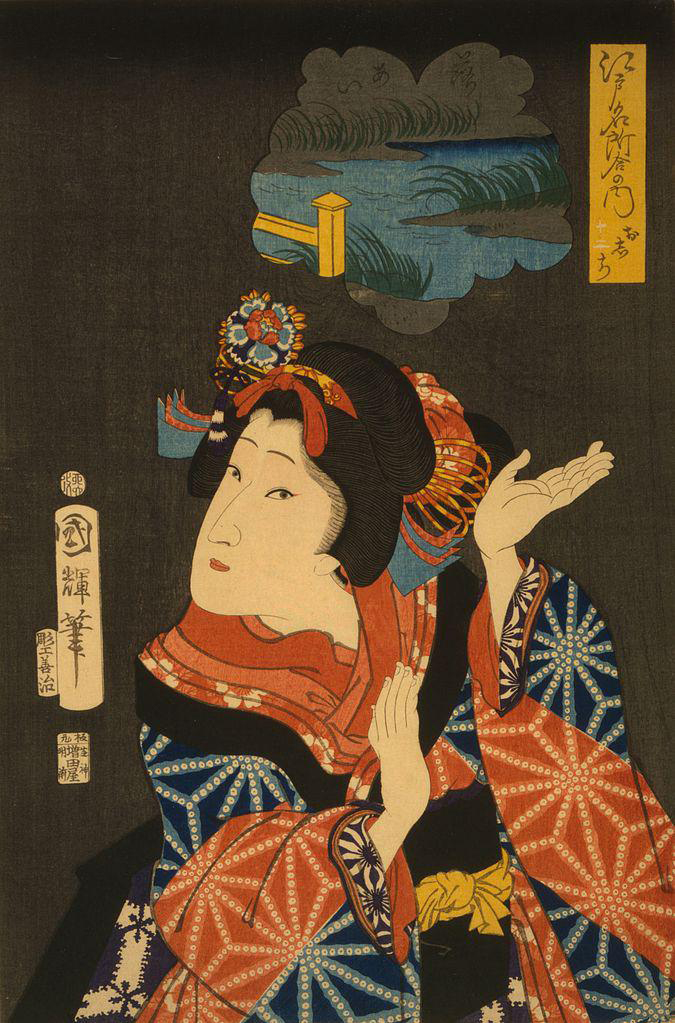 Sashiko stitching featured in a Japanese woodcut by Utagawa Kuniteru (1867)
Sashiko stitching featured in a Japanese woodcut by Utagawa Kuniteru (1867)
Sashiko originated in ancient Japan in northern agrarian areas, with the technique spreading south along trade routes over time. Rural families relied on sashiko to decorate, mend, and strengthen the fabric of their garments.
Industrialization of the fabric industry didn't spread to Japan until the late 1800's, and even then, purchasing fabric was out of the question for most, especially in northern areas where the climate was too cold to grow cotton.
Resourceful and resilient, families hand-wove their own textiles, most commonly from hemp or cotton in the south. These handmade fabrics were often thin, cold, and wore down easily. In an effort to make their garments last as long as possible and protect themselves from the winter cold, sashiko became a common practice. The stitching added warmth, durability, and absorbent qualities to the clothing. Sashiko was used for mending, as a part of the Boro patchwork method, to extend the life of the garment. For working families in ancient Japan, sashiko was more than a decorative craft; it was a means of survival.
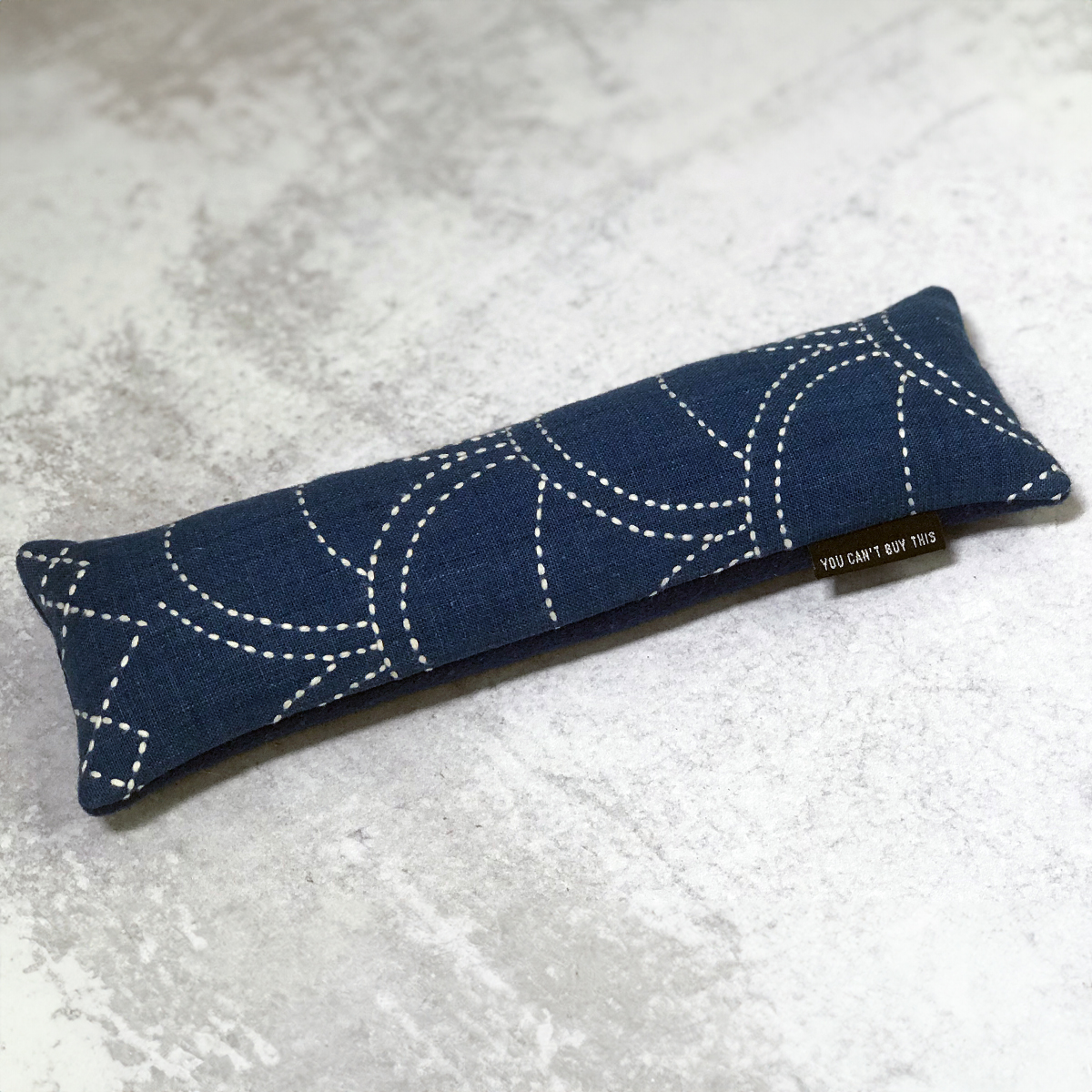
The traditional indigo and white color combination comes from ancient laws that prohibited lower classes from wearing clothing adorned with bright colors or large patterns. Indigo became very popular, as it was the most compatible dye with handwoven fabrics, within the colors allowed by law.
The patterns used in sashiko were inspired by many things, such as nature, architecture, other Japanese art, and textiles. Often, the stitcher would include their family crest, or kamon, in their designs.
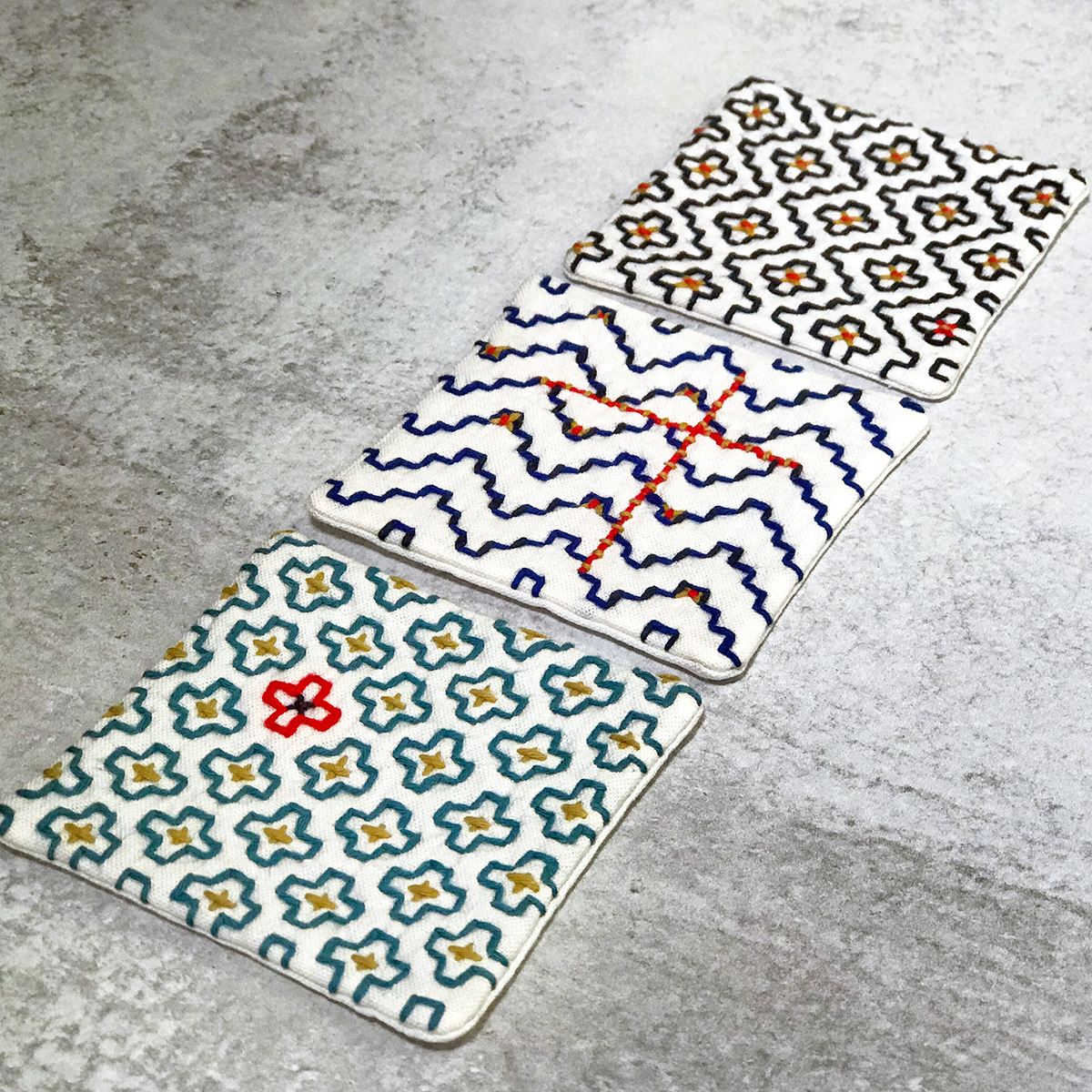
Over time, as manufactured fabrics became more accessible, the practice of sashiko moved more towards a decorative, traditional art form rather than one of function, though the origins can still be seen in the beautiful pieces created with this ancient technique.
Technique
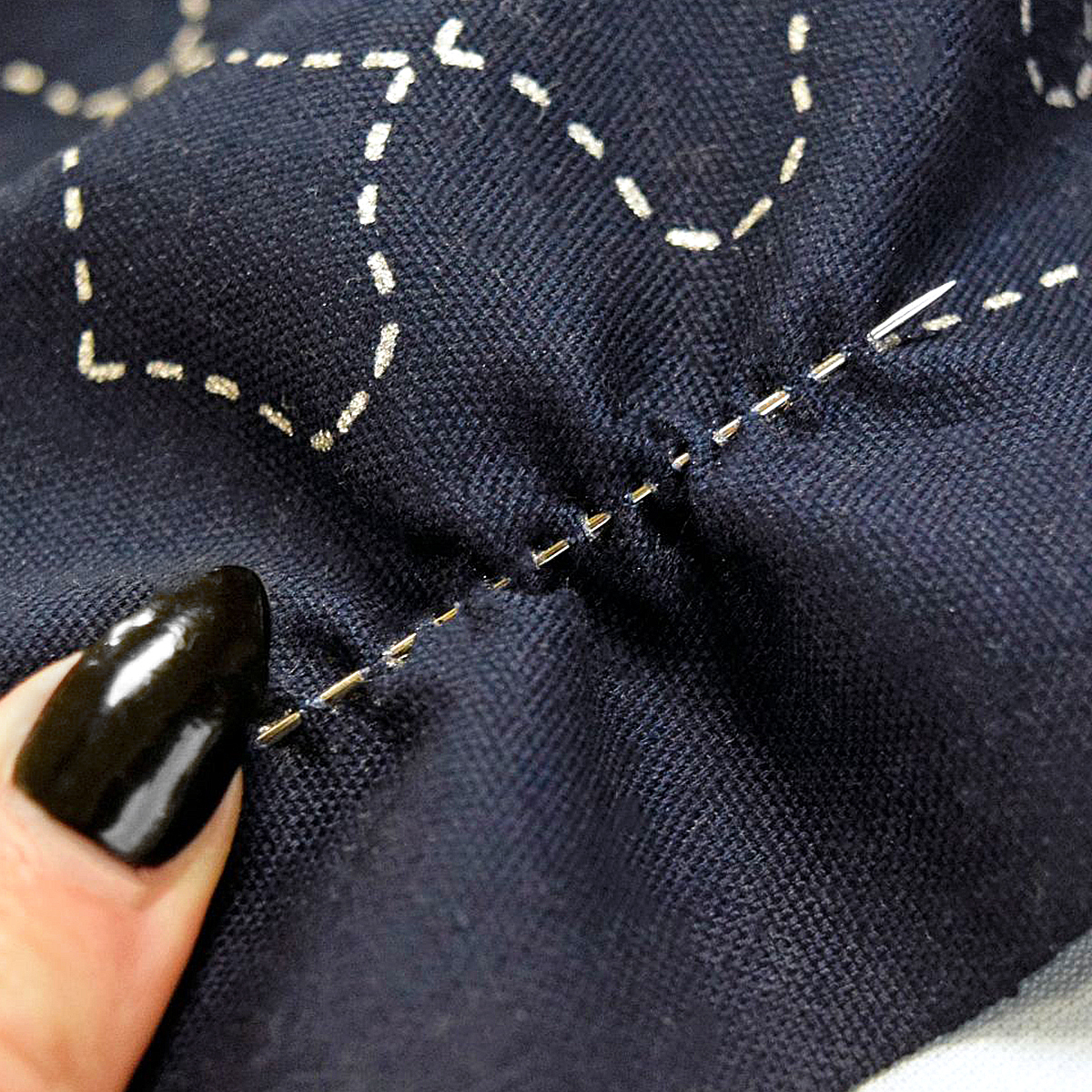
The Unshin, or needle movement technique, used in sashiko is one of consistency and quickness. The needle is moved up and down to the front and back of the fabric while being held parallel to the line being stitched. Making evenly spaced and consistent sized stitches is generally the goal, but sashiko is also meant to be done quickly, so it doesn't have to be perfect! Load up as many stitches on your needle as you feel comfortable with, then use your palm thimble to push the needle through the stitches from the eye end. Once you've pulled the needle through, pull your fabric taught to smooth it out, and continue stitching.
Thread
Traditionally, sashiko was done with a thick, loosely twisted, long staple cotton thread, but there are many options to stitch with today. Sashiko thread is usually flat with a matte finish, making it almost a part of the background. This creates a blended and cohesive look. Rather than the stitches being the main focus of the piece, the thread and fabric work together to create the end result.
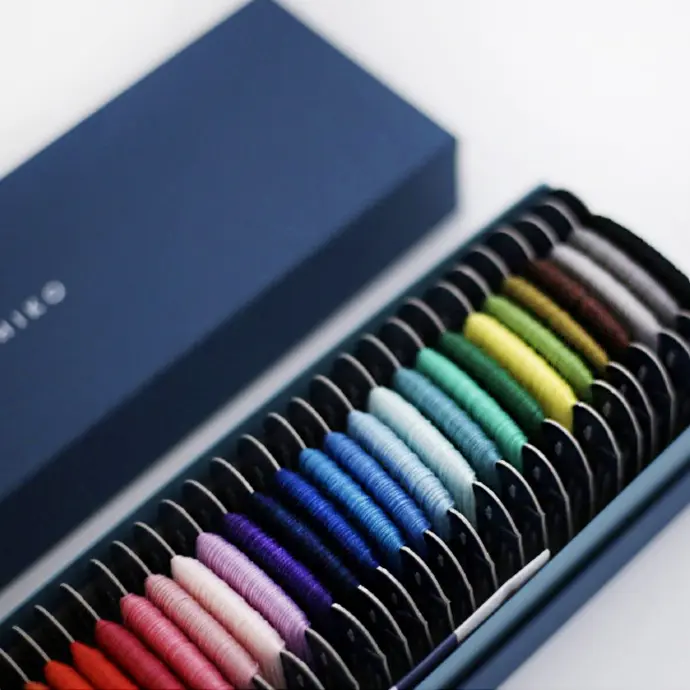
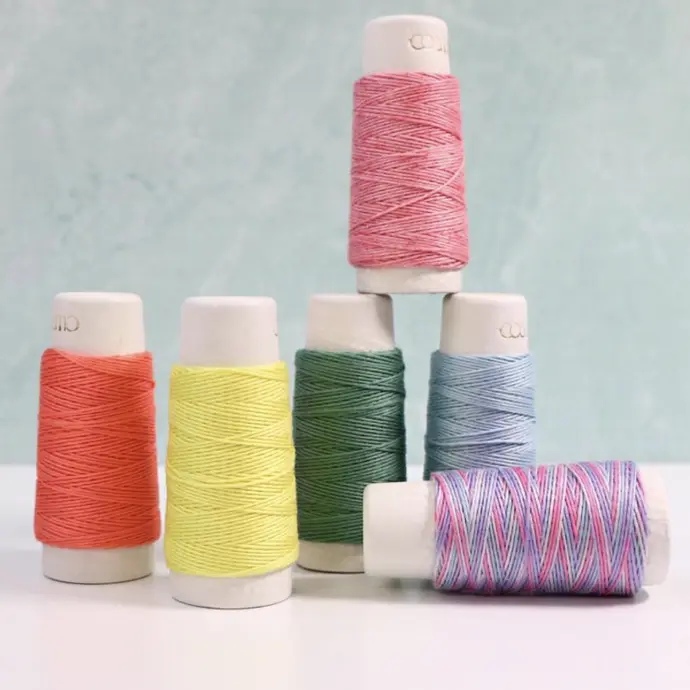
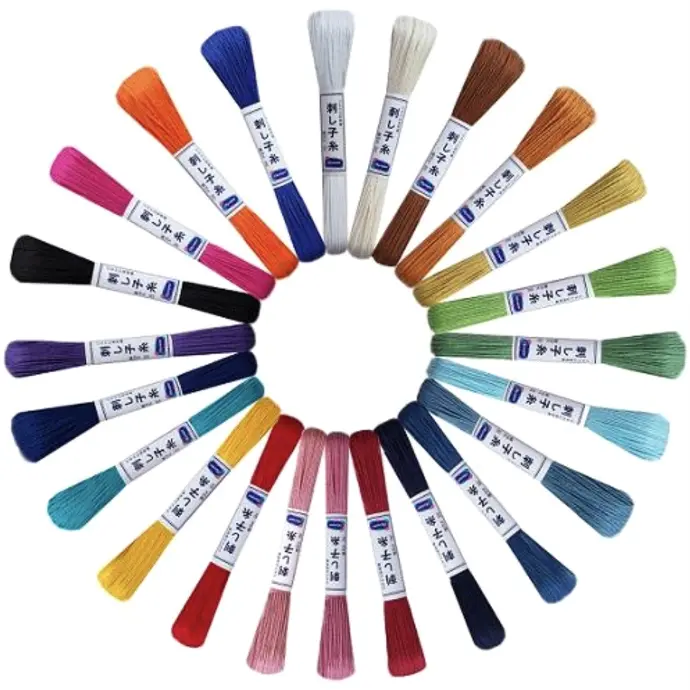
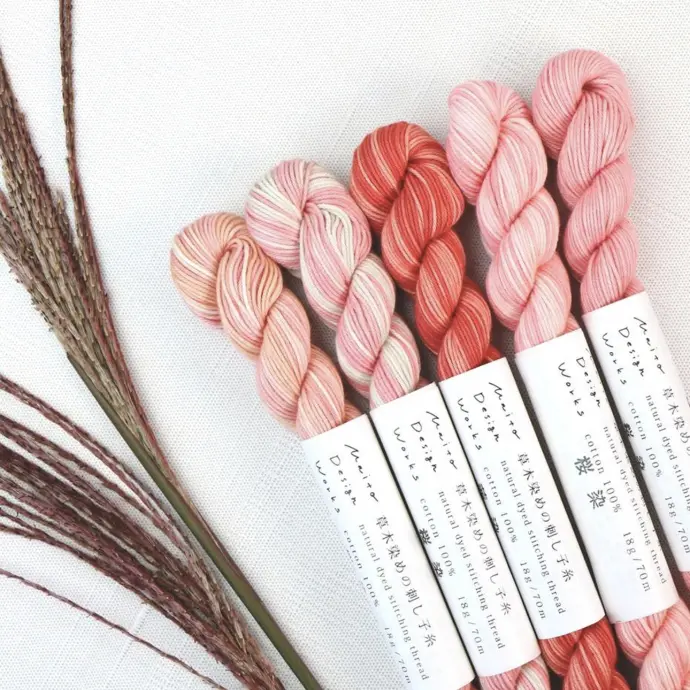
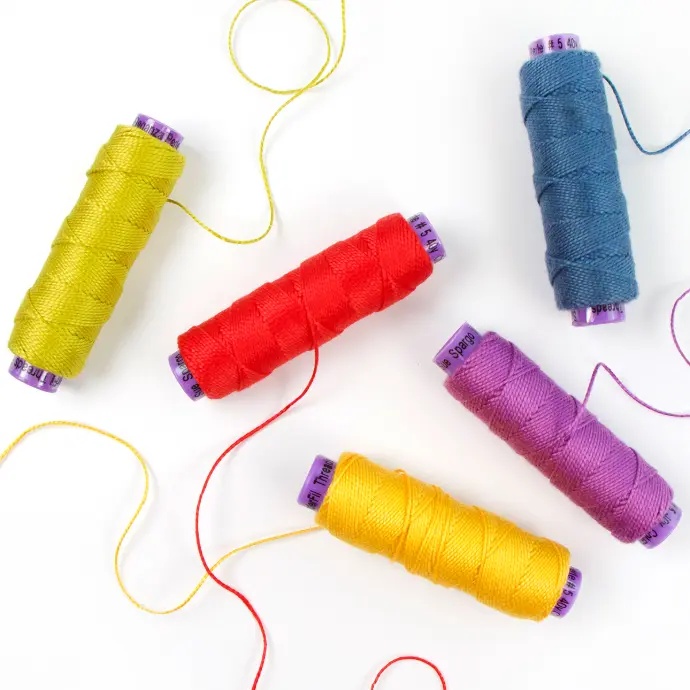
Daruma
Founded in 1901, Daruma's emphasis on quality led to its massive popularity, eventually becoming a household name. Daruma offers three varieties of 100% cotton sashiko thread, all made in Japan. Daruma Thin is comparable to a size 12 Perle Cotton. Daruma Thick is comparable to a size 8 Perle Cotton. Daruma Kogin is comparable to a size 5 Perle Cotton.
Hidamari
Cosmo Hidamari, meaning "Sunny Spot," is a size 22/6 sashiko thread available in a wide range of 40 colors! This includes solids, variegates, and other unique colorways to give your sashiko project a special and personal touch.
Olympus
Olympus Sashiko Threads are 100% cotton and made in Japan. Providing a smooth stitch and matte finish, Olympus offers a more traditional thread option; however, their color range is anything but traditional. Available in a wide range of colors, including solids and variegates, Olympus caters to both classic and unconventional stitchers.
Plant Dyed
These beautifully colored 100% cotton threads are hand dyed with natural dyes by the craftsmen of Maito Design Works in Akizuki, Asakura City, Fukuoka, Japan. Each thread tells the story of a different natural dye material, from cochineal to indigo to marigold and beyond. These threads are incredible for sashiko stitching as well as embroidery.
Eleganza Perle Cotton
Perle Cotton can also be used for sashiko stitching, as there are endless color options and many people are already comfortable stitching with it. Perle Cotton makes the stitches stand out more than sashiko thread, as the thread is not flat and doesn't have the traditional matte finish.
Needles
Sashiko takes minimal supplies; all you really need is a needle, thread, your project to stitch on, and a thimble. These projects are perfect for traveling; you can just grab and go!
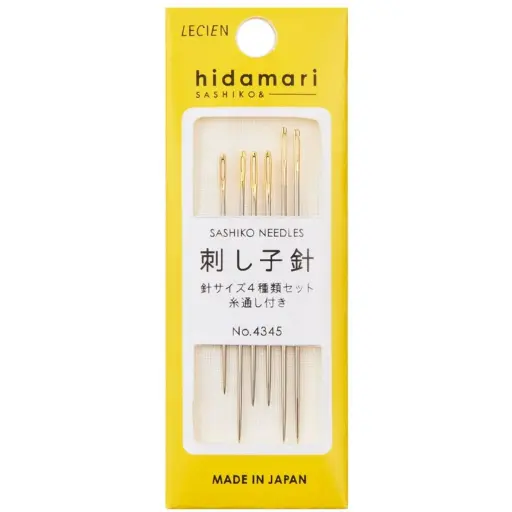
Hidamari Sashiko Assorted Needle Set
Sashiko needles are strong, long, and thick, with a long, straight oval eye, in order to thread the heavy sashiko thread. However, there are different needle length options as well, so it really comes down to what you're most comfortable using. A pack with various lengths, like the Hidamari Sashiko Assorted Needle Set, is best for a beginner to find what they're comfortable with.
Also great for beginners, the Tulip Assorted Sashiko Needles are available in long and short varieties, and both sets contain three size variations. These needles have a straight body and large eye, so they glide through the fabric smoothly and are easier to thread than a traditional sashiko needle. The Tulip Sashiko Needles (Short) are easy to control and are great for stitching along curved lines, whereas the Tulip Sashiko Needles (Long) are better for stitching along straight lines.
For those looking for a more traditional sashiko needle, Tulip's Sashiko Needles in either Big Eye Thick or Big Eye Thin are great options. These needles have a straight body and a large eye. Here you have the option of a thick or thin needle, which gives you more choices when it comes to choosing thread.

Tulip Kogin Needles
Kogin is a counted, straight stitch embroidery method and has a similar technique to sashiko in terms of needle movement; however, it's generally done on Aida cloth or linen. Since these fabrics usually have a looser weave, Tulip Kogin Needles have a thin, rounded point. These needles still work great for sashiko, especially when stitching on something with an open weave.
Pre-Printed Cloths
As the popularity of sashiko grows, the options for patterned cloths grow as well. There are still many options of cloths in the traditional colors of indigo and white, but there are also lots of cloths in modern tones to choose from.
The patterns on the pre-printed cloths are water-soluble, so once your piece is complete, you can wash away any remaining guide lines and focus on your beautiful stitching!
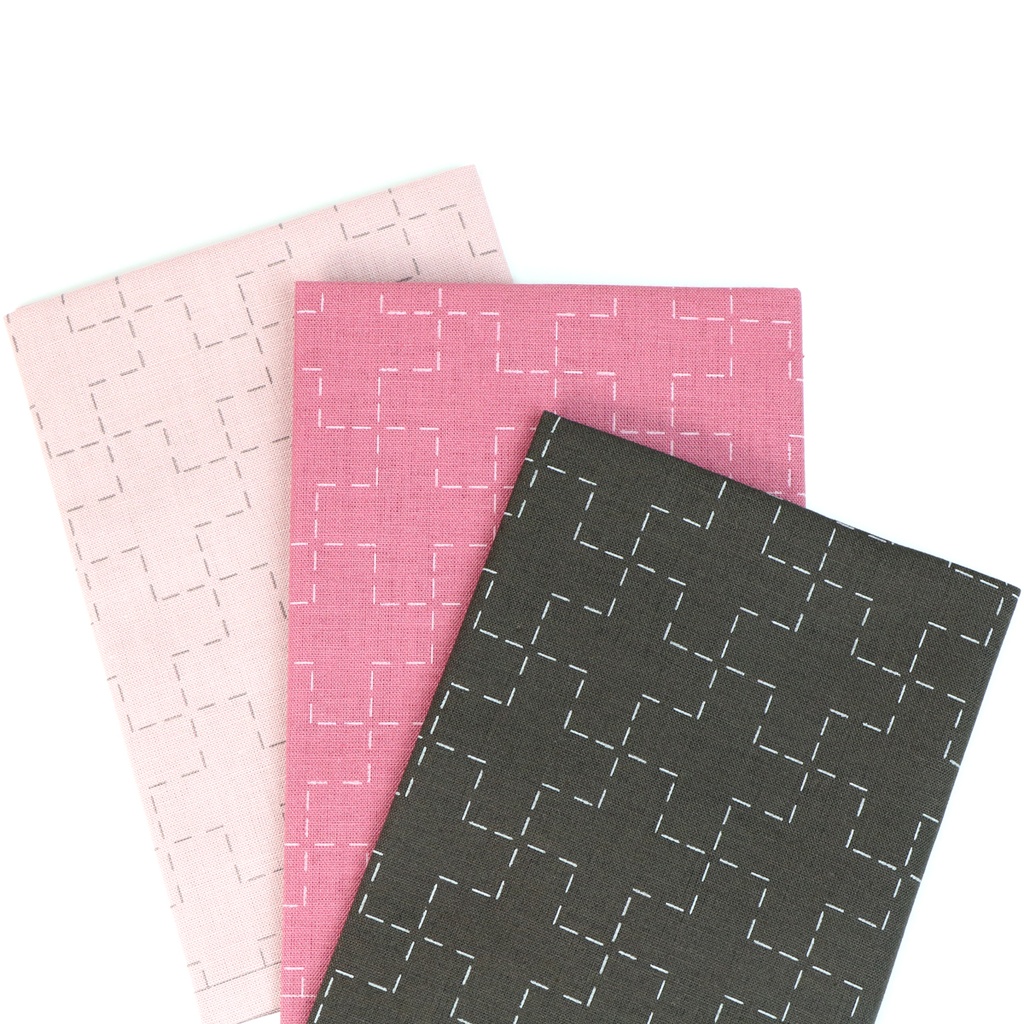
Sashiko Templates
Pre-printed cloths aren't your only option. Sashiko templates are a great option if you already have a fabric you would like to stitch on or would like to create your own design using traditional patterns. Using a chalk pencil, these templates can be traced to add sashiko stitching to whatever you choose.
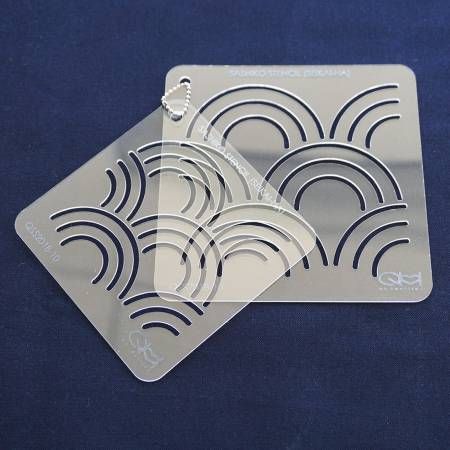
Sashiko Thimble
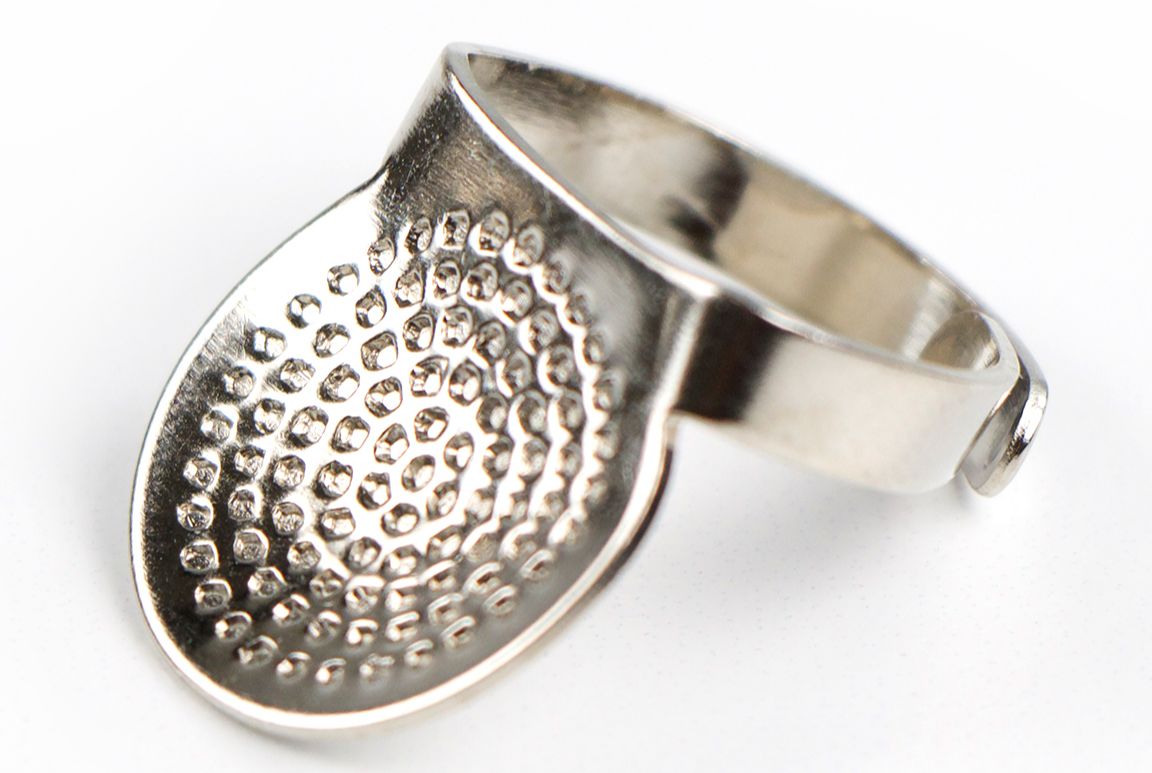
Tulip Adjustable Sashiko Thimble
The Unshin method's unique way to load the needle with stitches is greatly benefited by the use of a palm thimble. This is worn like a ring and sits at the base of your finger. You can use the plate of the thimble as a base for the eye end of the needle for added control. A palm thimble also makes it much easier to push the needle through the fabric when it is loaded with stitches.
Continue Learning
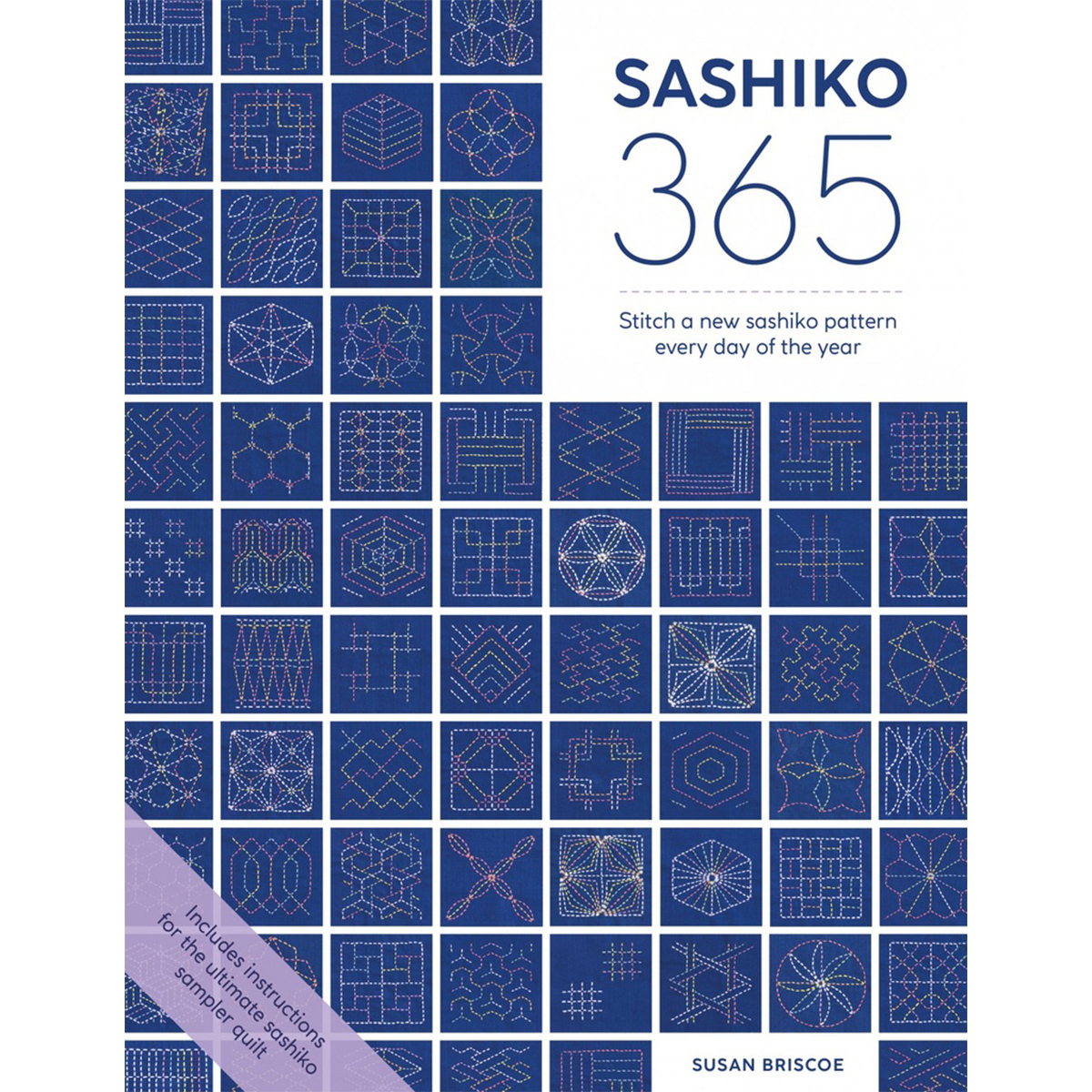
Sashiko 365 Book
Sashiko sewing expert Susan Briscoe demonstrates 365 different sashiko patterns, one for each day of the year. Sew all 365 to make a beautiful sashiko quilt featuring all the designs. Each pattern is stitched onto a 4" square, making it doable to sew one swatch a day. You can record the date of each sample you stitch in the book to create a record of your sewing. Each pattern includes written instructions, an instructional diagram, and a photo of the finished sample.
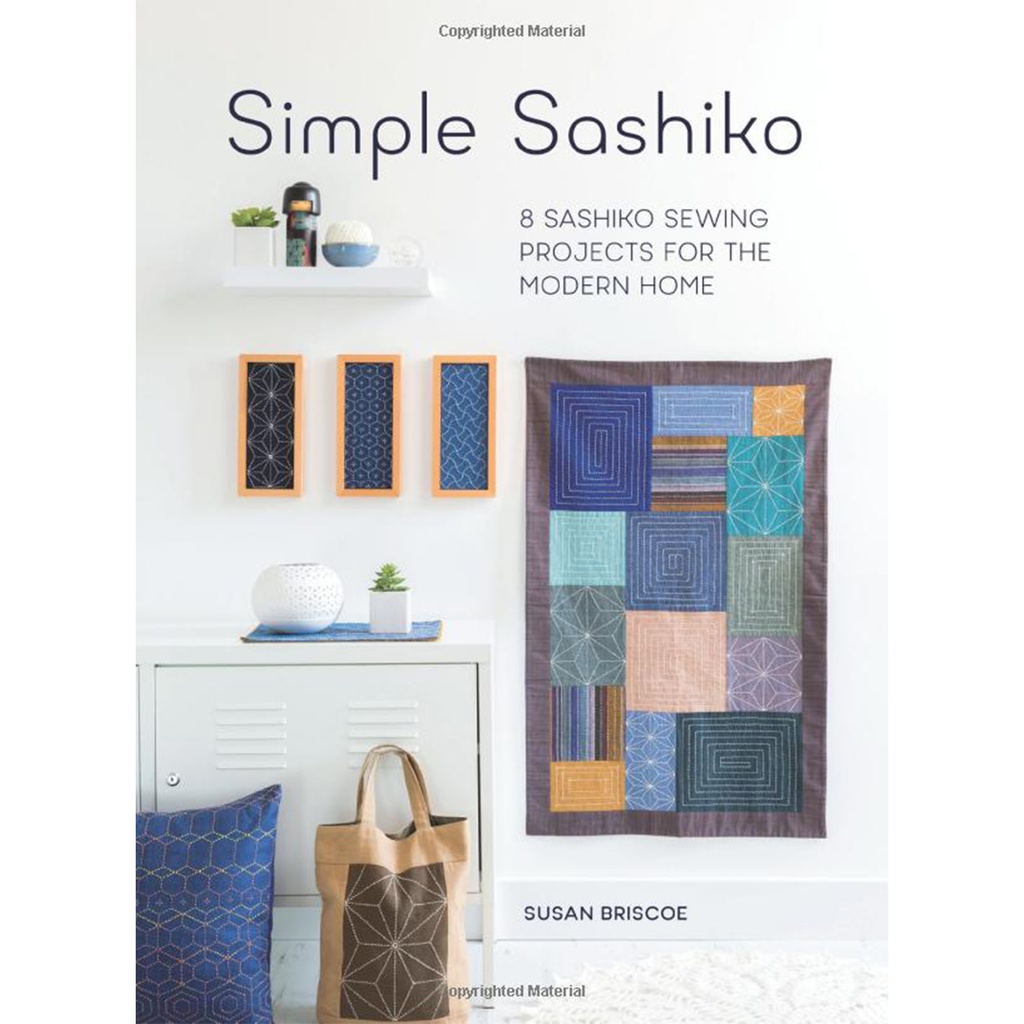
Simple Sashiko Book
Create contemporary homewares with a stylish, minimalist look, using the traditional Japanese sewing technique, sashiko. Currently a major sewing trend in craft, interiors, and fashion, sashiko uses big stitches of white thread on blue fabric to form geometric patterns and textures. This collection includes eight patterns for home decor, including a coaster, cushion, bag, wall hanging, and greeting cards, to offer you options to try this beautiful technique for yourself.
